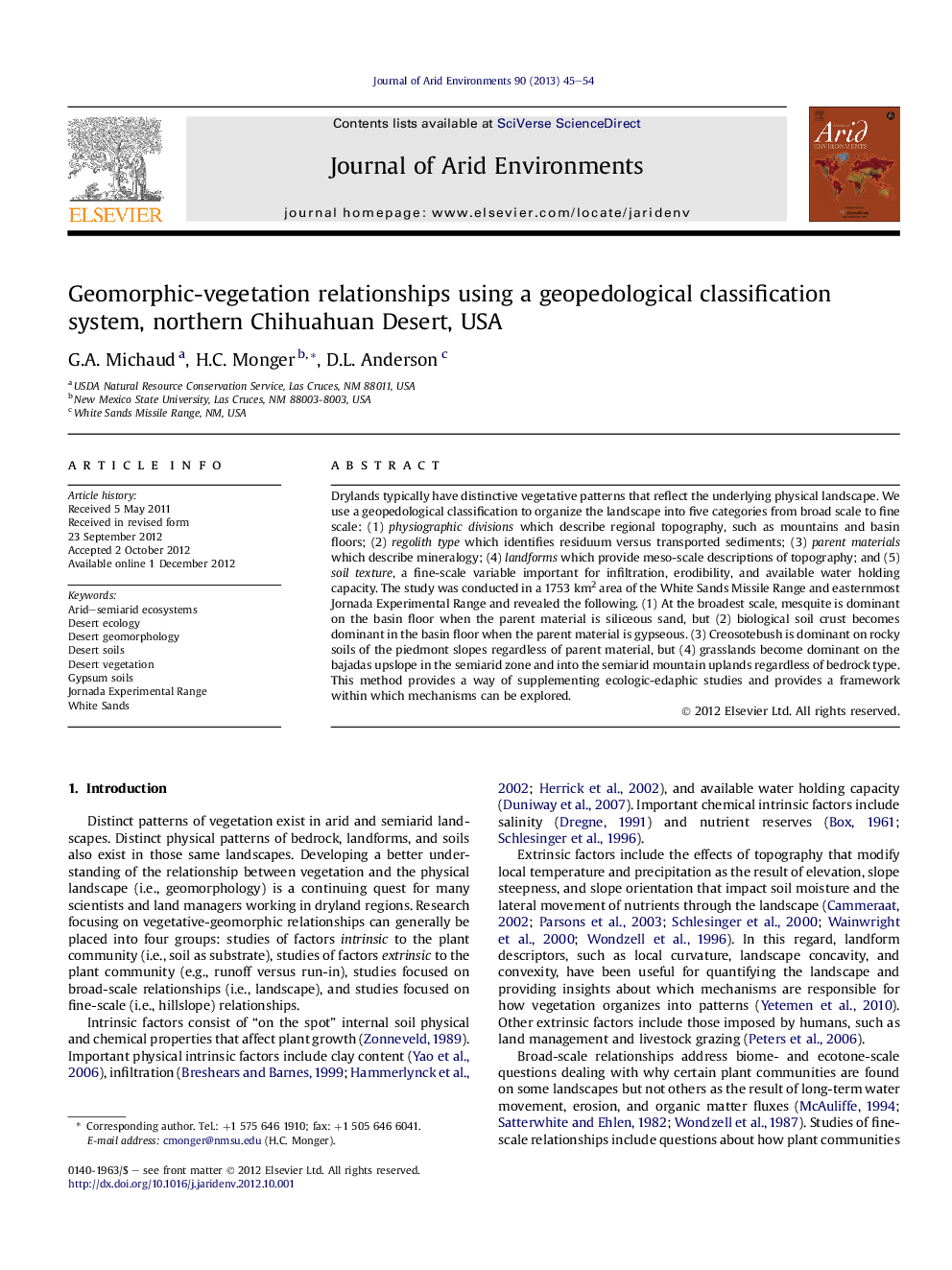| Article ID | Journal | Published Year | Pages | File Type |
|---|---|---|---|---|
| 4393185 | Journal of Arid Environments | 2013 | 10 Pages |
Drylands typically have distinctive vegetative patterns that reflect the underlying physical landscape. We use a geopedological classification to organize the landscape into five categories from broad scale to fine scale: (1) physiographic divisions which describe regional topography, such as mountains and basin floors; (2) regolith type which identifies residuum versus transported sediments; (3) parent materials which describe mineralogy; (4) landforms which provide meso-scale descriptions of topography; and (5) soil texture, a fine-scale variable important for infiltration, erodibility, and available water holding capacity. The study was conducted in a 1753 km2 area of the White Sands Missile Range and easternmost Jornada Experimental Range and revealed the following. (1) At the broadest scale, mesquite is dominant on the basin floor when the parent material is siliceous sand, but (2) biological soil crust becomes dominant in the basin floor when the parent material is gypseous. (3) Creosotebush is dominant on rocky soils of the piedmont slopes regardless of parent material, but (4) grasslands become dominant on the bajadas upslope in the semiarid zone and into the semiarid mountain uplands regardless of bedrock type. This method provides a way of supplementing ecologic-edaphic studies and provides a framework within which mechanisms can be explored.
► We develop cross-scale hierarchical method for describing arid landscapes. ► We quantify vegetation patterns in Chihuahuan area as a function of physical landscape factors. ► Increasing gypsum leads to increasing biological soil crusts in the basin floor section of study area. ► Increasing siliceous sand gives rise to increasing mesquite coppice dune formation. ► Creosotebush are most abundant on arid piedmont slopes but give way to increased grasses in the semiarid zone.
